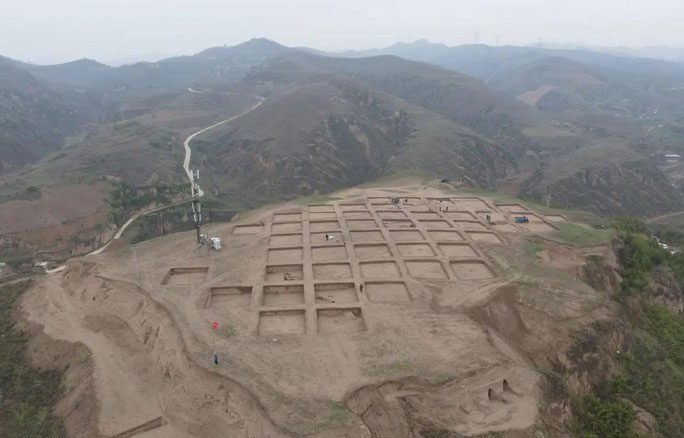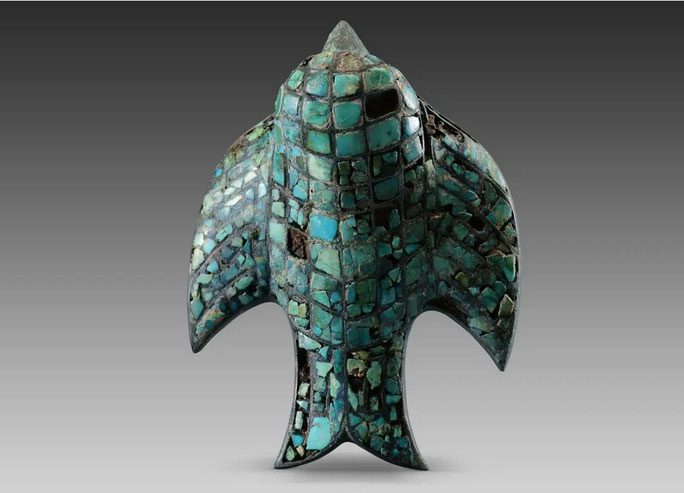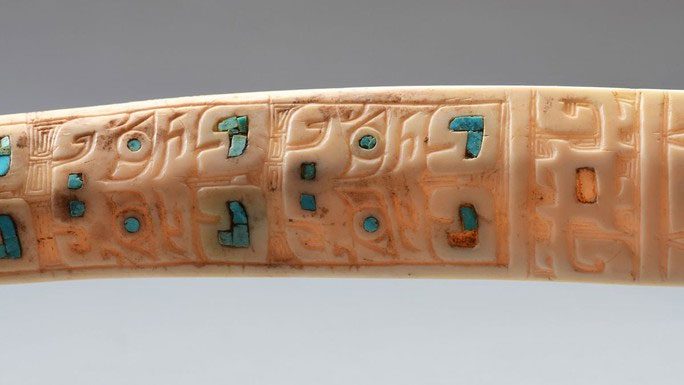On the hills covering a total area of 3 million square meters in Shaanxi Province, China, nine ancient cemeteries featuring a multitude of extravagant tombs over 3,000 years old have recently come to light.
According to the State Administration of Cultural Heritage of China, the hills located in Qingjian County, Shaanxi, have been identified as the vast cemetery of the Lijiaya culture, which dates back to the Shang Dynasty (1600 – 1045 BC).

A hill with a line of ancient tombs found – (Photo: STATE ADMINISTRATION OF CULTURAL HERITAGE OF CHINA).
According to Heritage Daily, archaeologists initially researched the Zhaigou archaeological site, a Lijiaya settlement in Qingjian County.
They decided to expand their exploration to the surrounding hills and discovered numerous rammed earth buildings and well-preserved human remains in ancient tombs.
Researcher Sun Zhanwei, who collaborates with the Shaanxi Provincial Institute of Archaeology, stated: “Nine cemeteries containing the remains of high-status individuals from the late Shang Dynasty have been uncovered, alongside seven ‘A’-shaped tombs oriented north-south. These are the largest noble tombs discovered in northern Shaanxi to date.”
Notably, four very large tombs, also from the Shang Dynasty, were excavated in the Changliang cemetery, including three pit tombs (M2, M3, M4), where researchers found over 200 extremely valuable ritual artifacts.
These artifacts include a complete bronze chariot set, an eagle-shaped belt buckle inlaid with turquoise, a turquoise-inlaid belt, an animal bone coffin, gold earrings, shell ornaments, jade artifacts, numerous funerary urns, axes, and bronze arrowheads…

Eagle-shaped turquoise belt buckle from the tomb – (Photo: STATE ADMINISTRATION OF CULTURAL HERITAGE OF CHINA).
A number of other tombs, although less extravagant, also contained many valuable treasures, leading to a preliminary announcement at the end of May 2023 that this area holds a massive cemetery for the nobility and wealthy individuals.
However, further excavations revealed that the cemetery is just a small part of the site, as the remains of an ancient settlement were uncovered.
This ancient town harbors numerous treasures and showcases advanced construction techniques, prompting archaeologists to suspect it may have been the capital of an unknown state that was conquered by the Shang Dynasty.

A piece of jewelry inlaid with jade excavated from the site – (Photo: CHINESE ARCHAEOLOGICAL INSTITUTE).

An ivory artifact inlaid with jade among over 200 masterpieces excavated from the ruins – (Photo: CHINESE ARCHAEOLOGICAL INSTITUTE).
This discovery is highly significant, as Shaanxi, along with Henan and Shanxi provinces, is regarded as the “cradle” of ancient Chinese civilization in the Yellow River basin. The Shang Dynasty is the earliest dynasty to leave abundant and clear archaeological evidence, despite some earlier evidence of the Xia Dynasty.
The center of the town was built on rammed earth, with buildings serving various functions, including workshops and kilns, promising to open a “time portal” for scientists to explore life more than 3,000 years ago in unprecedented detail.
Additionally, CGTN reported that archaeologists have also unearthed pieces of bronze chariot parts and horse remains, providing crucial evidence for understanding the emergence of chariots in China and the custom of burying both horses and vehicles as burial items.
According to researchers, the excavations have enhanced understanding of the political territory and geographical structure of the Shang Dynasty during that period, as well as the trade exchanges in the region, as reflected in the exquisite artifacts.





















































